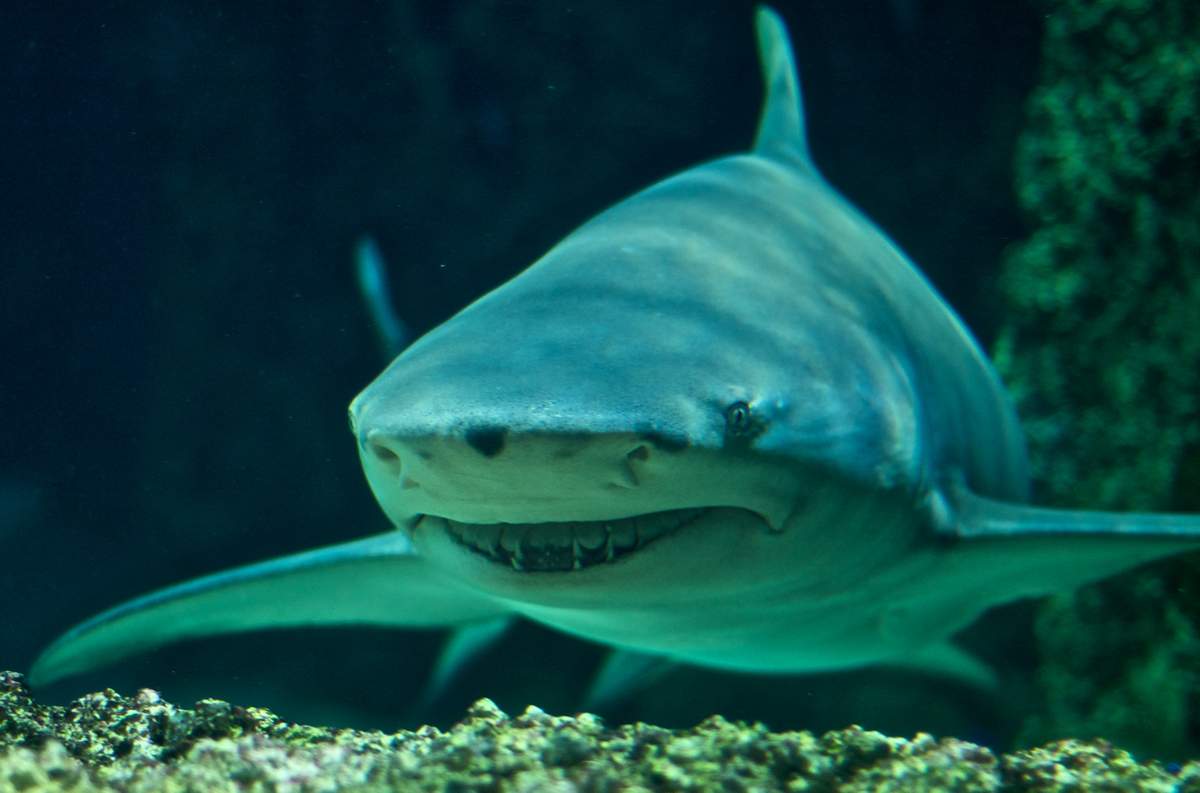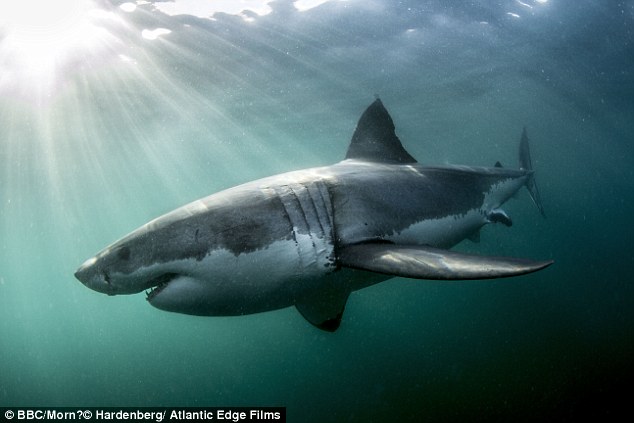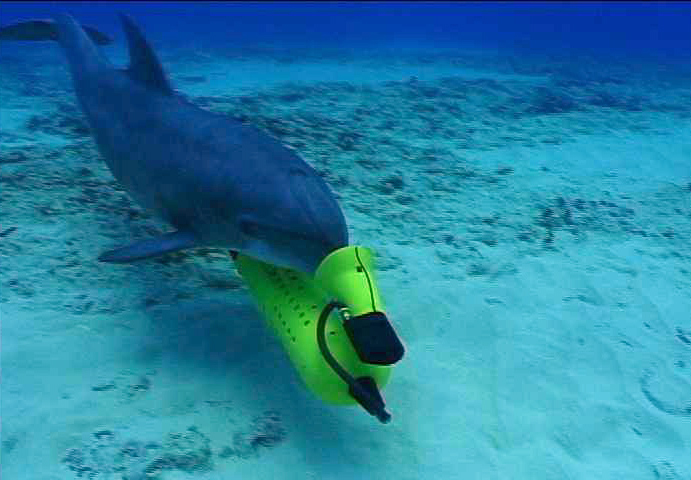Sharks and dolphins as weapons in the hands of the military

Kamikaze bombers tried to make lemon sharks
For 13 years, from 1958 to 1971, the US military worked on the implementation of the Headgear project. The main goal of this project is the creation of live weapons, which could hit targets at sea. It is about turning an ordinary shark into a live torpedo. Two laboratories and one institute took part in the project: Lerner, Mote, Scripps Institute of Oceanography.
The military wanted to make death sharks out of sharks. The task of the shark is to bring the explosives as close as possible to the enemy ship or submarine so that the target is hit during the explosion. The animal did not have to beat its head against the side of the ship, fulfilling the role of a full-fledged torpedo. Undermined the explosives automation. The developers decided to do without a human operator who would remotely press a button to detonate the charge. Shark gear was a bit of a horse harness. Electricity was used as the reins.
As the fish moved, the automatics followed the indications of the compass and gave a signal if the shark deviated from the correct course. The “signal” was an electrical discharge of 5–25 V. Electrodes were implanted into the shark’s body on the right and left sides. If the shark deviated to the left, she was beaten with a current to the left, and she, trying to get away from the source of irritation, swam to the right. The same thing happened if the deviation occurred right.
')
Why did the military decide to use sharks, and not, say, dolphins (they were also tried for the role of kamikazes, but we'll talk about this later)? The fact is that sharks are completely dumb, they have no devices for generating sound. Plus, the shark has no swim bladder, and with the help of the ship's sonar it cannot be detected. Fish shoals are detected by sonar due to the fact that most fish have a swim bladder. It is his, as the change in density among, and detects the device. The shark remains invisible for this device. A quiet and invisible weapon that can move very quickly - this is the kamikaze shark.

Another argument in favor of working with sharks was the large amount of research data on these fish. For years, the military tried to create a reliable shark repellent, and conducted numerous studies with them. As a result of these animals, the military studied far and wide, including physiology, behavioral patterns, and so on.
The US military decided to use a lemon shark in the experiment. But after the first tests it became clear that something had gone wrong. For some reason, the guide signal had no proper effect on the animal. The team changed the placement of the electrodes, the parameters of the electrical signal, including the duration of the discharge. Nothing worked. Leading experts even decided to test the system on themselves. One of the specialists put the system on and climbed into the pool, intending to check the operation of the automation. Everything went as planned: if a person deviated from the course, a discharge was sent to his side, and he was quite sensitive.
In the end, the cause of the problem was found. As it turned out, when setting up their system, scientists did not take into account one thing - while swimming, the shark makes prowling head movements. The system regarded this as a deviation from the course and shocked the unhappy shark with every head movement in any direction. It is clear that the dumbfounded fish did not understand what to do and where to swim, and moved erratically. In the updated system, the problem was solved, and now the shark was swimming where it was needed. The final version of the system was tested in 1967, nine years after the start of the project. Technique worked perfectly.
But the shark - no. If the signal was too weak, the shark simply ignored it. If it is too strong, the shark made absolutely chaotic, fast movements, began to swim in a circle and in general did not behave in the way it was necessary for scientists. Some sharks were more “obedient” than others, but none of them could swim for a given course for more than half an hour. During this time, the fish swam about three quarters of the nautical mile. After that, her behavior became unpredictable.
Scientists tried to use smaller sharks, but they simply could not carry both explosives and an automatic control system for their movement. As a result, the sharks could not be forced to do what the military needed. “We have serious doubts about the possibility of using a shark as a means of targeted delivery of cargo over any significant distances,” the report of scientists, dated June 16, 1971, states. After that, the military closed the project. The scale and seriousness of the military’s intentions can be judged by the number of bases for testing shark control systems: the bases were dug up in the Bahamas, Cocos Island (Hawaii), San Diego, Puerto Rico, Key West.
And the dolphins?
They were engaged in both Soviet and American scientists. In the USSR, the first major military aquarium was opened in 1967. It launched 50 bottlenose dolphins. The project was attended by several dozen scientific institutions of the USSR. Dolphins were trained both to protect certain sea areas, and to destroy saboteurs, and to search for mines, ships, and submarines. Having found something, the dolphin had to inform the trainer about it. At the very beginning of the project a food promotion system was used. If the dolphin did everything right, then he got the fish. As a result, some animals began to offer their own solutions to the problems posed by trainers, seeking to get more fish.
Killing people dolphins are not taught. But not for humane reasons. The reason is different - the dolphin cannot distinguish between its own and those of others scuba divers. If they were taught to kill people, the Soviet military who took part in the training sessions would have suffered. Therefore, the dolphin was trained to tear flippers and masks, pushing saboteurs to the surface of the water. There the “guest” was picked up by special boats with special forces.

The dolphins-special forces brought the greatest benefit as teams of underwater search . Thanks to their sonar and vision, they found the objects lost by the military. Dolphins can even find bolts and nuts, not to mention larger items.
In the Black Sea during the USSR, military exercises with firing exercises were constantly held. Used and torpedoes, however, training. Such a torpedo cost many thousands of rubles, and the military lost them with enviable regularity. According to experts, with the help of their sonar, dolphins can search for objects even in the thick mud or sand. They can also determine from which material the found object is made - metal, wood or concrete. Of course, the dolphins were trained to do this, smart animals quickly understood what was required of them.
In just a few years, dolphins were able to recoup the cost of their own training and the maintenance of the aquarium. They found dozens of training torpedoes, lost equipment that fell from the sides of the ships. One of the dolphins could even find an automatic mini-submarine that the military lost ten years ago. Its cost was estimated in tens of thousands of Soviet rubles.
Special cameras were also developed for dolphins that worked at a depth of up to 100 meters. The animals were taught to photograph the objects they had found, and the military, looking at the pictures, understood whether it was worth raising the find to the surface or not. Dolphins have repeatedly helped archaeologists to find at great depths artifacts of past centuries - amphorae, sunken ancient ships, weapons.

They tried to use dolphins as a kamikaze, like sharks. To do this, electrodes were implanted into the dolphin's brain, and when current was applied, the illusion of a loud sound or flash of light was created. Such a system worked by analogy with shark devices. But creating a kamikaze dolphin was very difficult. First, these are very intelligent animals, and despite all the tricks of the military, they simply did not want to die, refused to carry out commands. Secondly, the operations on implanting electrodes into the dolphin's brain are very complex, it is not at all like implanting an electrode into the body of a shark. Not all scientists agreed to implant electrodes in the dolphin’s brain, not wanting to harm the animal. Thirdly, dolphins with implanted electrodes often became ill and lived very shortly.
All this led to the fact that the use of dolphins as kamikaze bombers was decided to be abandoned. Now conducting operations on dolphins to conduct such experiments is prohibited in most countries.
The military of Russia and Ukraine continued to work with dolphins and after the collapse of the USSR. Experiments continue to this day. In March of this year, the Ministry of Defense of the Russian Federation ordered five bottlenose dolphins . Why dolphins department, not specified. According to the terms of the order, the performer must deliver the dolphins to the Crimea.
Source: https://habr.com/ru/post/396943/
All Articles